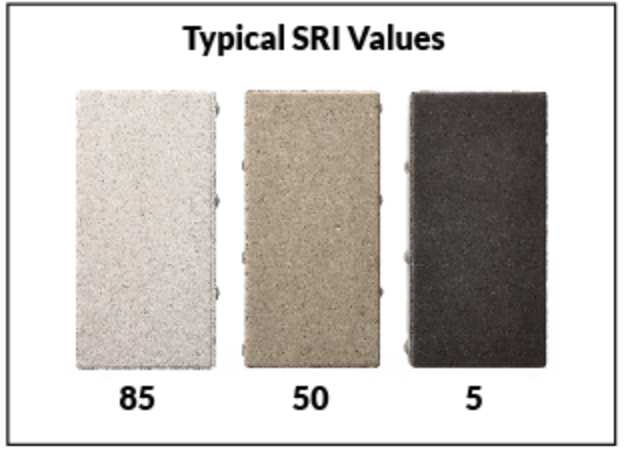
For hardscape owners and designers color is a very important consideration for aesthetics and function, but heres another factor: color can also impact sustainability. Choosing lighter colors can help mitigate the urban heat island effect.
Heat islands can result in cities when built structures and paved surfaces radiate energy from the sun to a greater extend than farmland or natural areas. In this way, cities create their own microclimates that can be up to 7° F (4° C) warmer than the surroundings.
Some examples of how heat islands negatively impact our environment include more air conditioning use, increased air pollution and green house gas emissions from power plants meeting air conditioning energy demands, and lower human health and wellbeing from excessive heat.
Landscape architects can play a role in cooling cities by specifying increased tree and vegetation cover, adding living or green roofs to structures, and selecting light color surfaces also known as cool pavements.
Research was done in New York City which found that planting trees and vegetation would be greatly beneficial to cool surfaces. However, they encountered a common urban problem - in many New York City neighborhoods there is no space.
Many large cities just don’t have the space required to plant enough new trees and greenery for an effective heat island reduction strategy.
Therefore, the most attainable approach is often to redevelop the large areas of dark, paved surfaces with lighter surface materials.
Heat Island Reduction - Non-Roof: LEED v4.1
LEED points can be awarded for paving materials with an initial solar reflectance (SR) value of at least 0.33.

The Solar Reflectance Index (SRI) is a criterion used by US Green Building Council (USGBC) that measures values of sunlight and radiation bouncing from built surfaces.
SRI is used to indicate how hot a material is likely to become when its surface comes into contact with solar radiation. On a scale of 0 to 100, standard black is 0, and standard white is 100. According to this scale, testing indicates that absorbent materials have lower numbers while reflective materials have higher numbers.
Applying this to the hardscape environment, it follows that dark pavements have low SRI values, whereas light pavements typically have higher SRI values.
In other words, light colored surfaces absorb less heat and make the immediate area more comfortable – think playgrounds or pools where bathers have bare feet. Lighter surfaces also reduce the need for nighttime lighting and make areas safer.
Combining light colors with permeable pavers can provide even more cooling benefits because permeable interlocking concrete pavers (PICP) are designed and constructed to lower surface temperatures through evaporative cooling as well. The Interlocking Concrete Paver Institute (ICPI) has many useful resources for designers at www.icpi.org.
New surface treatments from ACM Chemistries protect paver surfaces from fading and stains. Lighter colors no longer have to appear washed out or marred by food or dirt stains. Colors and patterns stay vibrant and stains and dirt can be easily removed.
For more information on surface treatments, check out https://www.acmchem.com/dry-cast-paver-surface-treatments/
Interlocking Concrete Paver Institute (ICPI)
https://icpi.org/benefits-fact-sheets
US EPA